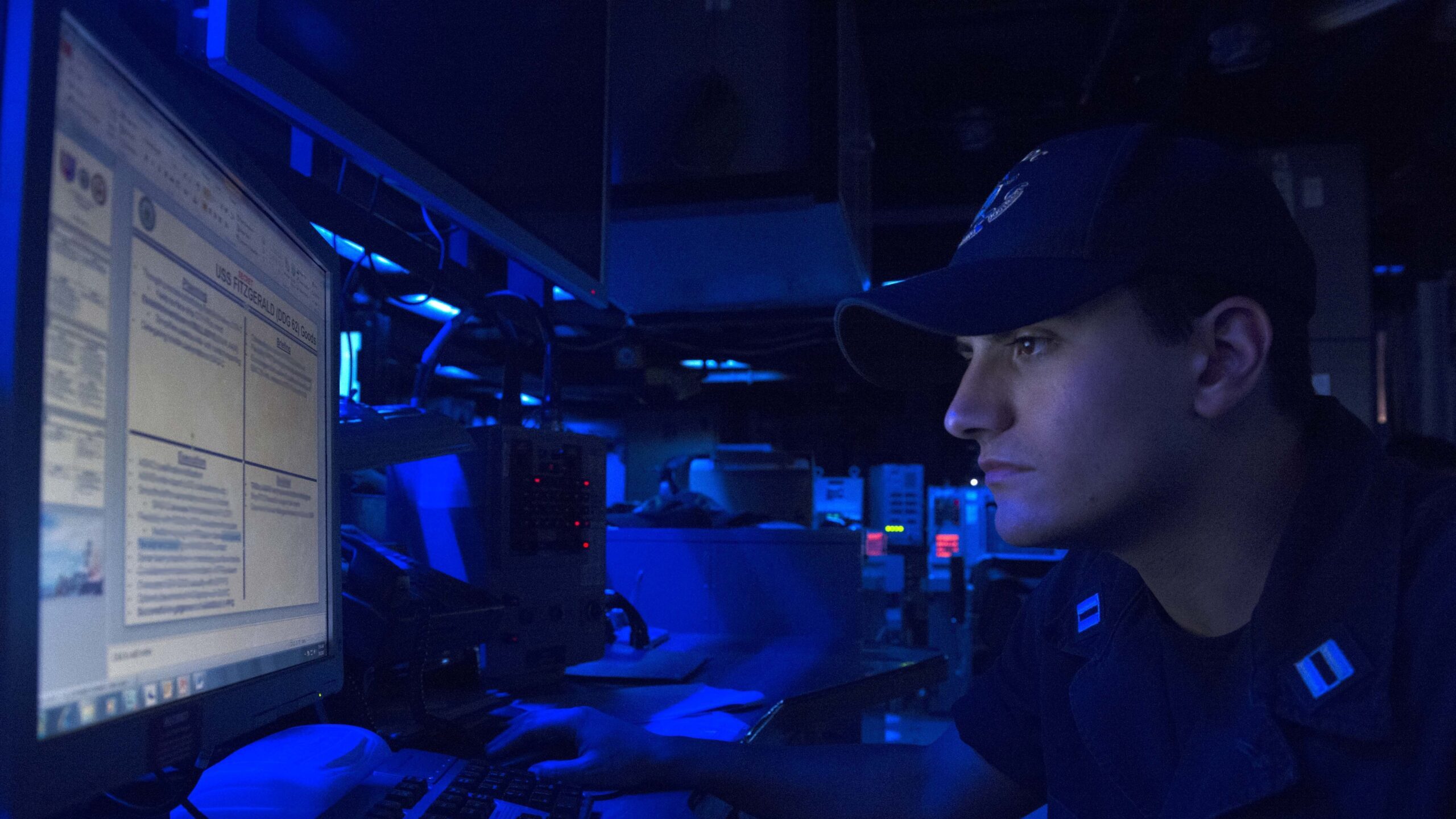
Lt. Christian Asaban sights a laptop keep an eye on aboard the ahead-deployed Arleigh Burke-course guided-missile destroyer USS Fitzgerald (DDG 62) in the course of Multisail 17 on March 8, 2017. (U.S. Navy picture by Mass Conversation Specialist 2nd Course William McCann/Produced)
WASHINGTON: The way the Navy at the moment methods cybersecurity is “wrong,” and the company requires to shift from viewing it as a compliance trouble toward a product rooted in readiness, according to the service’s main details officer.
“Today, I would argue that the way that we do cybersecurity at the Department of Navy — and at the Section of Defense but which is earlier mentioned my paygrade — … is completely wrong,” Aaron Weis, Navy CIO, reported at the Cloudera Govt Forum. “We watch cybersecurity as a compliance challenge. And it is most absolutely not a compliance issue.”
Alternatively, the service wants to go towards a readiness model that is calculated holistically, he mentioned.
“And when I discuss about readiness, I’m not indicating it’s fleet readiness … I’m declaring it is a model motivated by how we method readiness,” Aaron Weis, Navy CIO, claimed at the Cloudera Governing administration Discussion board. “Readiness is a thing that is a dynamic model … It is measured incredibly holistically.”
Linked Distinctive: MS Groups buyers at Military Futures Command likely uncovered personal facts
Cybersecurity as a result of compliance success in hazard will increase, delayed abilities, inadequate protection and wasted resources, according to Weis.
The Navy has been doing work toward its new, holistic product considering the fact that previous November and to that close made a system termed Cyber Ready. With the system, the assistance desires to change cybersecurity absent from rote compliance forms and towards a “cyber ready” condition that allows acquisition velocity and much better defends the service’s information.
The plan also seeks to “apply products of forex so that we’re not just finding an ATO [authorization to operate] as soon as, but you’re continuing to earn and re-make your ATO day to day as a result of this idea of currency,” Weis said.
Linked: App Retailer For Warships: Inside of The Navy’s Undertaking To Revamp How The Fleet Will get Software program
In addition to the forex strategy, Weis explained, there are quite a few traces of work the Navy is pursuing to move the service to a more holistic cybersecurity solution, which include continous checking with system-pushed red teaming and car-pink teaming, acquisition improvements and planning its workforce.
“And so we’re on a path. This released final calendar year,” Weis said. “We are on a first set of sprints, a 90-day sprint, in which we’re placing the meat on the bones of this plan. And we’re also actively operating to identify sets of pilots. And so we’re getting a modest variety of pilots who are volunteering to go by way of this and assist us find out and it will be a hugely iterative strategy as we transfer ahead.”
Weir also laid out a few broad aims the Navy wants to accomplish based on its 2019 Cyber Readiness Evaluation: modernize the service’s infrastructure, travel innovation at speed and protect the service’s information and facts “wherever it is.”
“And notably, we did not use the term cyber. I’m of the head that cyber is in all probability one particular of the most overused words and phrases in this city, in this sector … It usually means every thing to everybody,” he claimed. “And hence it kind of implies practically nothing. So we have to put a finer point on it. We have to defend our information and facts anywhere it lives — at rest, in transit, in the industrial foundation, in our systems, at the tactical edge. You title it, we have to be capable to defend it. And we have not been undertaking a terrific career of that in the previous as the Cyber Readiness Review articulated.”
Weis’s opinions occur as the Pentagon ramps up funding in its cyberspace functions and aims to streamline its huge network infrastructure of non-provider-distinct businesses.
DoD in its fiscal 2023 ask for needs $11.2 billion to harden its networks, operationalize zero believe in architecture and maximize cybersecurity assist for defense contractors. The ask for is an $800 million enhance over its FY21 request.
“We’re also investing to strengthen readiness in the nation’s cyber force by funding cyber ranges to enable training and physical exercises in the cyber area,” Vice Adm. Ron Boxall, director of pressure framework, assets and assessment for the Joint Workers, informed reporters March 29. “Finally, the budget lays the foundation for US [Cyber Command] to have ownership of the mission and assets of the cyber mission drive commencing in FY24 as directed in the [FY]22 NDAA.”
